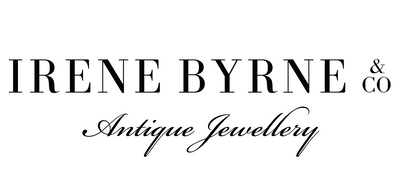The 1930s represents a period of significant cultural and artistic transformation. This era marked the height of the Art Deco movement, which embraced modernity, technological innovation, and geometric precision. The craftsmanship of these rings reflects the cultural context of the 1930s, where societal changes influenced design aesthetics, materials, and techniques.
Geometric Precision and Industrial Influence
Art Deco rings from this period were characterised by their geometric and symmetrical designs, reflecting the era's fascination with industrial precision and modernist aesthetics. Jeweller's crafted rings with clean lines and bold shapes, often using stepped geometric settings to create depth and visual interest. This architectural approach mirrored the skyscrapers and streamlined buildings that defined the urban landscape of the time. The emphasis on symmetry and order echoed society's desire for stability during a period of economic uncertainty.
Architectural Translation in Metalwork
The metalwork of Art Deco rings showcased exceptional craftsmanship. Artisans developed techniques to achieve the precise gradations needed for stepped and layered constructions, creating visual depth while maintaining structural integrity. Engraved detailing on ring shoulders featured modernist motifs, moving away from the naturalistic designs of previous eras. This intricate engraving added texture and elegance, enhancing the overall design.
Technological Innovation in Stone Setting
The 1930s saw innovations in gemstone cutting and setting. Jeweller's increasingly used emerald cuts and baguette cut stones, requiring precise calibration to achieve the clean lines typical of Art Deco design. The use of rectangular arrangements of stones demonstrated the era's technical mastery and aesthetic principles. This precision in stone setting was a testament to the artisans' skills and the era's embrace of technological progress.
Cultural Expression Through Material Choices
Despite economic challenges during the Great Depression, jewellery makers maintained high standards of execution. They developed techniques to work with various materials, balancing luxury with accessibility. The handmade jewellery approach emphasised individual craftsmanship, even as designs embraced industrial aesthetics. Transformational designs emerged, allowing pieces to serve multiple functions, reflecting practicality and the glamour promoted by Hollywood culture.
Overall, this 1930s Art Deco sapphire and diamond ring embodies the spirit of an era that celebrated technological advancement, artistic innovation, and cultural transformation. Its design reflects a unique synthesis of traditional jewellery making skills with modernist philosophy, creating pieces that were both technically sophisticated and culturally resonant. These rings remain highly sought after for their timeless appeal and historical significance, representing a pinnacle of Art Deco design and craftsmanship.

